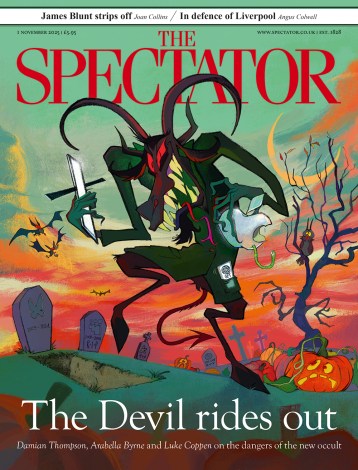My great-grandmother Netty died in June 2005, aged 99. I was four. That evening, my grandmother called us grandchildren into her living room and opened what looked like a small treasure chest. Out spilled her sparkling jewels. ‘Take whatever you want,’ she said. ‘She’d have wanted you to have them.’
I grabbed three things: a pair of glittering earrings, a silver bracelet and a gold Star of David encircled by a delicate band touching each of the star’s points. At four, I only cared for the earrings. The rest I tucked away for ‘less special’ occasions.
At 16, I found the star again, hidden in my jewellery box. Remembering my great-grandmother Netty, it felt significant – almost necessary that this should become my new necklace, my staple piece. Now, I’m 25 and I haven’t taken it off since.
For most of my life, my Jewishness was purely cultural
In recent years, my mother has often urged me to tuck it under my jumper before leaving the house. ‘I just don’t want anything happening to you,’ she pleads. I shake my head and walk out, the star on full display. My ever cautious Jewish mother being overly paranoid, what’s new? Surely, a disapproving glance is the worst one risks for wearing a symbol of faith – for, in no uncertain terms, being a Jew.
I’m not naive; I’ve read the figures. A recent YouGov survey for the CAA found that more than one in five Britons now hold anti-Semitic views, nearly double the figure recorded in 2021. In an increasingly hostile society, caution has become the new normal. But there’s a difference between being careful and hiding, and the latter is something I will never be prepared to do.
Two weeks ago, I realised that perhaps my mother’s paranoia was in fact completely justified. I watched the video of a Jewish lawyer being questioned by a detective for wearing a Star of David outside a protest in London. He was detained for nearly ten hours and told his necklace ‘antagonised protesters’. My jaw dropped. Surely this couldn’t be real.
I was incredulous as the detective’s attention lingered on his necklace – a symbol of our faith, meant to signify divine protection, unity and resilience. The police have denied that the necklace was the cause of his arrest. In that moment, divine protection may have felt absent, but I hope he has found comfort in the unwavering unity and resilience of our community.
This episode has reverberated across dinner tables, phone calls, and in every conversation among Jewish people. We feel his shock and share his pain; we talk about it because it unsettles us. In doing so we reaffirm our togetherness which remains unbreakable, and a source of comfort in these turbulent times.
Visibility, once simply an expression of heritage, has become a test of public tolerance. Many are rightly frightened to be recognised as Jewish in any regard. Friends hush me if I speak about Israel in anything louder than a whisper. Some tuck their stars beneath their shirts. Just two days ago, I overheard a young man admitting he removes his kippah every time he goes into central London. All of which are understandable responses to our uneasy reality.
The devastating attack in Manchester on Yom Kippur confirmed that our fears are more than justified. While horrifying, such an attack was, sadly, inevitably anticipated. These incidents chip away at any sense of safety we once took for granted, forcing us to constantly deliberate how visible our identity should be.
For most of my life, my Jewishness was purely cultural, marked by Friday night dinners and chicken soup, not by politics or protest. That distinction has blurred. Today, even the smallest expression of identity can feel like an act of resistance against anti-Jewish and anti-Israel hatred. Unfortunately, a necklace that once rested easily against my skin now carries this weight. I am acutely aware of every glance it catches and each judgement it invites. No longer just another accessory, it is tied to a conscious decision: to be seen.
Still, I don’t wear my star out of defiance alone. It’s not a protest badge. It’s a reminder of family, of continuity, belonging. It connects me to my great-grandmother and to generations of Jews who were forced to wear the same symbol under unimaginable threat, who preserved their traditions when doing so was an act of brilliant courage.
Now, 80 years since the end of the Holocaust, I often catch a flicker of the past in my reflection as my star glistens. The flicker grows brighter as hatred grows louder. And the louder it booms, the more determined I am never to unclasp it.
For me, concealing my star feels like slicing away a piece of my character. I wear mine openly because it connects me to my great-grandmother. I wear it because I refuse to believe that a symbol of faith or culture should ever have to be hidden. I don’t wear it to antagonise protesters or provoke a reaction; nor did that bystander. I wear it because being Jewish and being proud of this is part of who I am.
For some, a necklace is just an accessory. For me, it’s a declaration that I belong, not defined by place, but by my identity as a Jewish person. That belonging should never have to be negotiated.







Comments